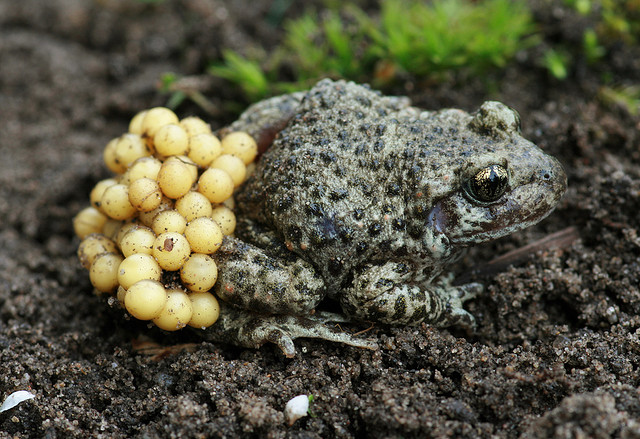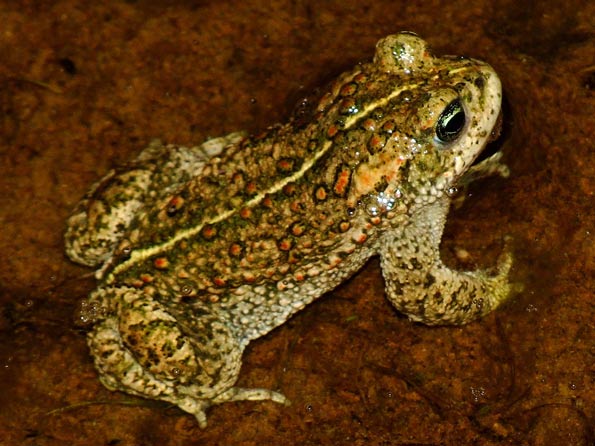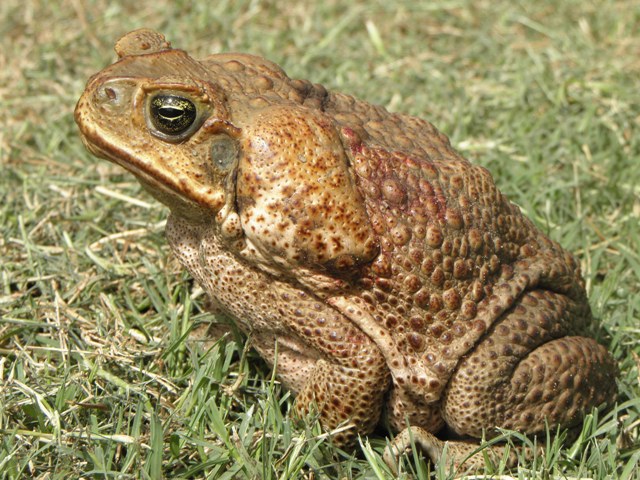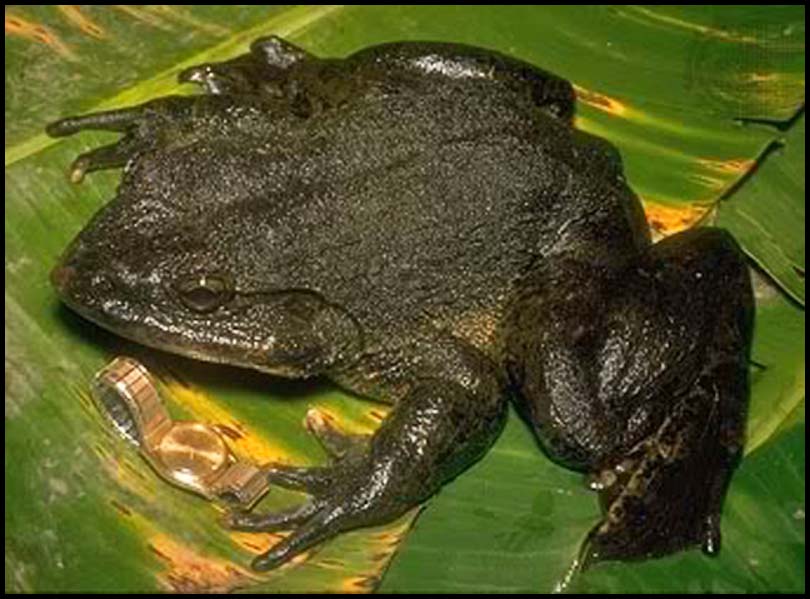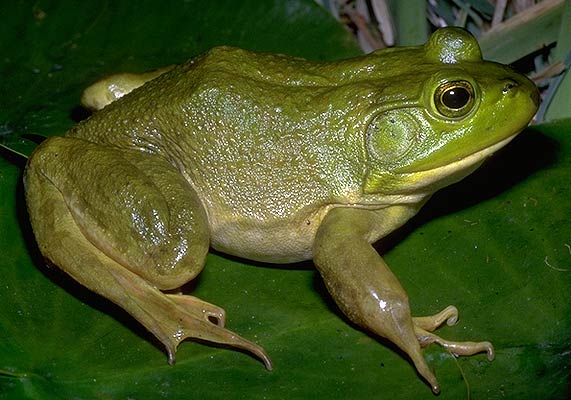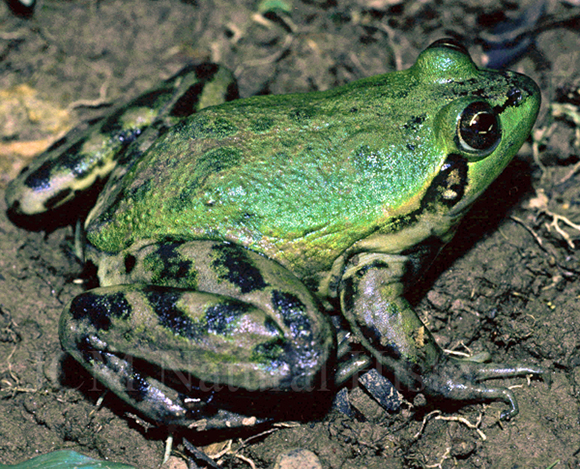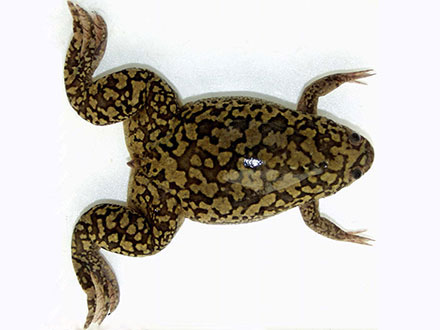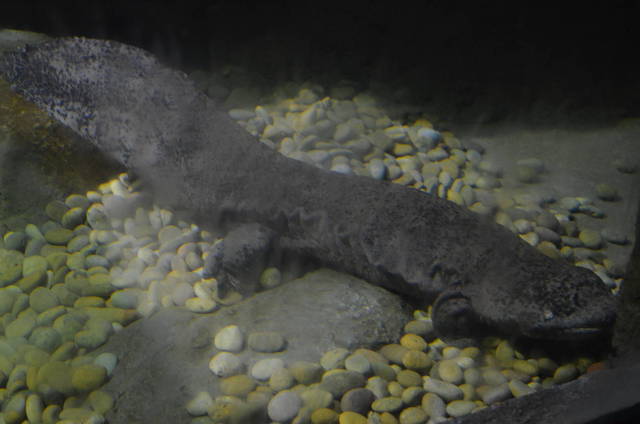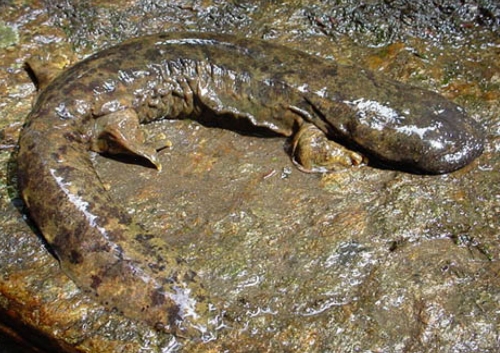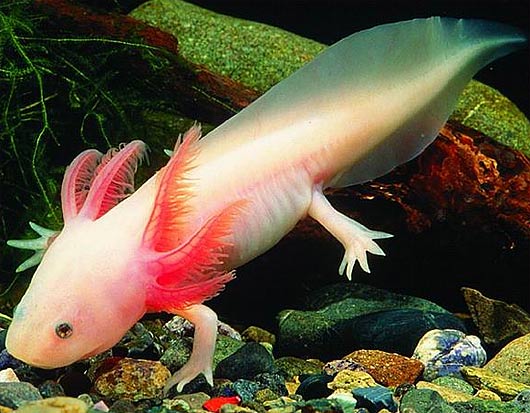Difference between revisions of "Physical World/Amphibians"
(Created page with "{| class="wikitable" | |'''Midwife toad''' genus ''Alytes'' The males carry a string of fertilised eggs on their back, hence the name "midwife" The back of the midwife...") |
(added images) |
||
| Line 1: | Line 1: | ||
{| class="wikitable" | {| class="wikitable" | ||
| − | | | + | |[[File:Midwife toad.jpg|none|thumb]] |
|'''Midwife toad''' | |'''Midwife toad''' | ||
| + | |||
| Line 7: | Line 8: | ||
The males carry a string of fertilised eggs on their back, hence the name "midwife" | The males carry a string of fertilised eggs on their back, hence the name "midwife" | ||
| − | |||
The back of the midwife toad is covered with small warts. These warts give off a strong smelling poison when the toad is attacked | The back of the midwife toad is covered with small warts. These warts give off a strong smelling poison when the toad is attacked | ||
|- | |- | ||
| − | | | + | |[[File:Natterjack toad.jpg|none|thumb]] |
|'''Natterjack toad''' | |'''Natterjack toad''' | ||
| + | |||
''Bufo calamita'' | ''Bufo calamita'' | ||
| + | |||
Distinguished from common toads by a yellow line down the middle of the back, and parallel paratoid glands | Distinguished from common toads by a yellow line down the middle of the back, and parallel paratoid glands | ||
| − | |||
Natterjacks have a very loud and distinctive mating call | Natterjacks have a very loud and distinctive mating call | ||
|- | |- | ||
| − | | | + | |[[File:Cane toad.jpg|none|thumb]] |
|'''Cane toad''' | |'''Cane toad''' | ||
| + | |||
''Rhinella marina'' | ''Rhinella marina'' | ||
| + | |||
Introduced to many regions of the Pacific and the Caribbean islands as a method of agricultural pest control. The species derives its common name from its use against the cane beetle. The cane toad is now considered a pest and an invasive species | Introduced to many regions of the Pacific and the Caribbean islands as a method of agricultural pest control. The species derives its common name from its use against the cane beetle. The cane toad is now considered a pest and an invasive species | ||
|- | |- | ||
| − | | | + | |[[File:Goliath frog.jpg|none|thumb]] |
|'''Goliath frog''' | |'''Goliath frog''' | ||
| + | |||
''Conraua goliath'' | ''Conraua goliath'' | ||
| + | |||
Largest living frog on Earth. Specimens can grow up to 32 cm (12.6 in) in length. Found in Cameroon and Equatorial Guinea | Largest living frog on Earth. Specimens can grow up to 32 cm (12.6 in) in length. Found in Cameroon and Equatorial Guinea | ||
| − | |||
The one in the picture has stolen a watch! | The one in the picture has stolen a watch! | ||
|- | |- | ||
| − | | | + | |[[File:American bullfrog.jpg|none|thumb]] |
|'''American bullfrog''' | |'''American bullfrog''' | ||
| + | |||
''Rana catesbeiana'' | ''Rana catesbeiana'' | ||
| + | |||
Has an olive green back and sides. Males have yellow throats | Has an olive green back and sides. Males have yellow throats | ||
| − | |||
Native to southern and eastern parts of the United States and Canada | Native to southern and eastern parts of the United States and Canada | ||
|- | |- | ||
| − | | | + | |[[File:Paradoxical frog.jpg|none|thumb]] |
|'''Paradoxical frog''' | |'''Paradoxical frog''' | ||
| + | |||
''Pseudis paradoxa'' | ''Pseudis paradoxa'' | ||
| + | |||
Its name refers to the very large – up to 25 cm (10 in) long – tadpole, which in turn becomes an ordinary-sized frog, only about a quarter of its former length | Its name refers to the very large – up to 25 cm (10 in) long – tadpole, which in turn becomes an ordinary-sized frog, only about a quarter of its former length | ||
|- | |- | ||
| − | | | + | |[[File:Xenopus.jpg|none|thumb]] |
|'''Xenopus''' | |'''Xenopus''' | ||
| + | |||
genus ''Xenopus'' | genus ''Xenopus'' | ||
| + | |||
Commonly known as the clawed frog | Commonly known as the clawed frog | ||
| − | |||
Studied as model organisms for developmental biology, cell biology, toxicology, neuroscience and for modelling human disease and birth defects | Studied as model organisms for developmental biology, cell biology, toxicology, neuroscience and for modelling human disease and birth defects | ||
|- | |- | ||
| − | | | + | |[[File:Chinese giant salamander.jpg|none|thumb]] |
|'''Chinese giant salamander''' | |'''Chinese giant salamander''' | ||
| + | |||
''Andrias davidianus'' | ''Andrias davidianus'' | ||
| + | |||
The largest salamander and largest amphibian in the world, reaching a length of 180 cm (5.9 ft) | The largest salamander and largest amphibian in the world, reaching a length of 180 cm (5.9 ft) | ||
| − | |||
A living fossil which is classified as critically endangered | A living fossil which is classified as critically endangered | ||
|- | |- | ||
| − | | | + | |[[File:Hellbender.jpg|none|thumb]] |
|'''Hellbender''' | |'''Hellbender''' | ||
| + | |||
''Cryptobranchus alleganiensis'' | ''Cryptobranchus alleganiensis'' | ||
| + | |||
A species of giant salamander endemic to eastern North America | A species of giant salamander endemic to eastern North America | ||
| − | It is blotchy brown or red-brown in | + | It is blotchy brown or red-brown in colour, with a paler underbelly |
|- | |- | ||
| − | | | + | |[[File:Axolotl.jpg|none|thumb]] |
|'''Axolotl''' | |'''Axolotl''' | ||
| + | |||
''Ambystoma mexicanum'' | ''Ambystoma mexicanum'' | ||
| + | |||
Also known as a Mexican salamander and colloquially known as a "walking fish" | Also known as a Mexican salamander and colloquially known as a "walking fish" | ||
| − | |||
Axolotls reach adulthood without undergoing metamorphosis. Instead of developing lungs and taking to land, the adults remain aquatic and gilled | Axolotls reach adulthood without undergoing metamorphosis. Instead of developing lungs and taking to land, the adults remain aquatic and gilled | ||
Revision as of 14:45, 1 July 2021
| Midwife toad
genus Alytes The males carry a string of fertilised eggs on their back, hence the name "midwife" The back of the midwife toad is covered with small warts. These warts give off a strong smelling poison when the toad is attacked | |
| Natterjack toad
Bufo calamita
Natterjacks have a very loud and distinctive mating call | |
| Cane toad
Rhinella marina
| |
| Goliath frog
Conraua goliath
The one in the picture has stolen a watch! | |
| American bullfrog
Rana catesbeiana
Native to southern and eastern parts of the United States and Canada | |
| Paradoxical frog
Pseudis paradoxa
| |
| Xenopus
genus Xenopus
Studied as model organisms for developmental biology, cell biology, toxicology, neuroscience and for modelling human disease and birth defects | |
| Chinese giant salamander
Andrias davidianus
A living fossil which is classified as critically endangered | |
| Hellbender
Cryptobranchus alleganiensis
| |
| Axolotl
Ambystoma mexicanum
Axolotls reach adulthood without undergoing metamorphosis. Instead of developing lungs and taking to land, the adults remain aquatic and gilled
| |
|
Also known as northern crested newt
|
